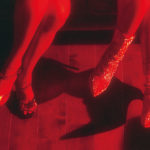Is The Runway Struggling To Stay Relevant?
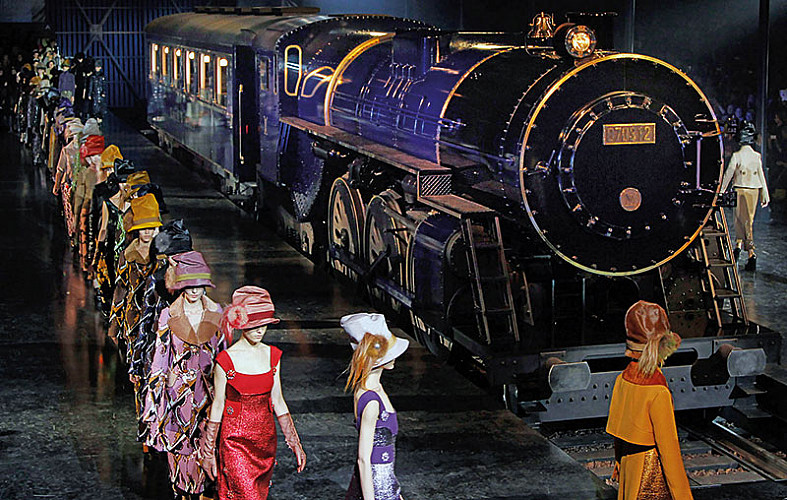
On a recent sleepy Sunday, I logged into Facebook after a dutiful notification popped up — ‘Verve is live from fashion week!’ It was the grand finale of Amazon India Fashion Week, which we were streaming straight from Delhi. As the number of viewers increased along with the pace of the show, I could see people tagging their friends and reacting to lehngas they wished to own. In between Facebook Live’s trademark flying emojis and the Kathak performance at the venue, a furore broke out when a model tripped on the ramp — all in real time.

Fashion shows weren’t always this gratifying. Before the runway was subjected to iPhones and Instagram, over-the-top productions and the Kardashians, they were marketing gimmicks used to entice wealthy clients into buying a couturier’s designs. Professor Caroline Evans, in her book The Mechanical Smile, explains the secretive nature of fashion: ‘It was very hard to get into a couture house sometimes. Even if you came with letters of recommendation, or were well connected or rich, it was still quite difficult until you were trusted enough’. The first fashion shows were heavily policed for fear of piracy, and PR assistants existed primarily to keep party crashers at bay! Later in the 1900s, with the heavy increase of foreign buyers, couture houses began holding fashion shows on fixed dates, twice a year, forming the basis of what we call fashion weeks. Revolutionising the industry with the New Look in 1947, Christian Dior originally showed at small salons, while Coco Chanel invited audiences to her home.
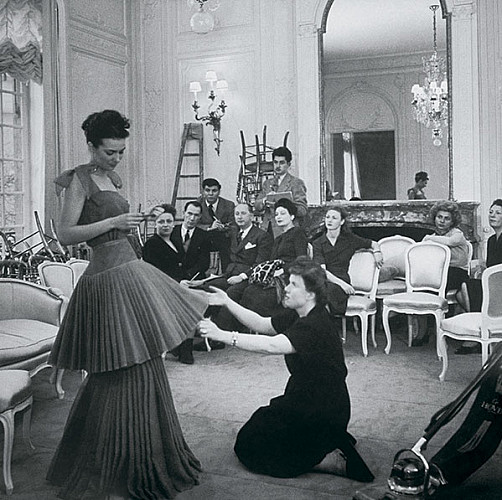
Little did they know that half a century later, Karl Lagerfeld would take this small-scale marketing vehicle to the Great Wall of China, Alexander McQueen would stage a show in the middle of a ring of fire, and Marc Jacobs would construct an eight-million-dollar train only to transport his models and their porters to the runway in Paris.
Fashion’s love affair with the runway has produced dazzling theatrics and superlative shows. The bottom line, today, is not about accepting the shift away from seasonal collections (focusing on clothes rather than climate!), or wondering whether social media is killing the ramp, but that the industry is evolving and individualistic. As Coco said, ‘It is not something that exists in dresses only….’ So when Karl Lagerfeld sent out models in Stormtrooper-like headgears (worn over signature tweed jackets) for Chanel SS17, he reiterated her belief when he said that ‘…fashion has to do with ideas, the way we live, what is happening’. The set, a makeshift data centre, was a metaphor for the surreal infrastructure that currently powers our lives.
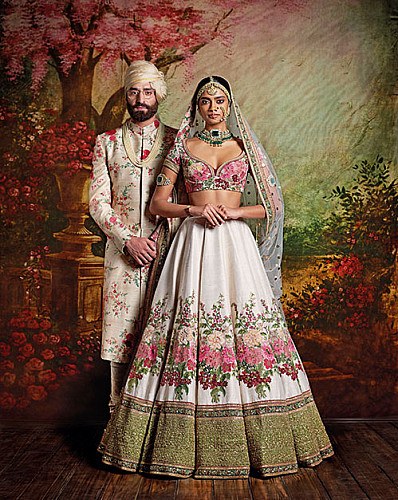
According to a study by telecom company Ericsson, the average Indian spends three hours and 18 minutes on the smartphone, checking it at least 77 times a day. It was no surprise then that fashion entrepreneur and designer Sabyasachi Mukherjee showed his collection, Firdaus, through an Instagram-only platform this year. Without toning down the exuberance, 18 artists from Sabyasachi Art Foundation worked on the set and the music was recorded live in Kolkata — all for the seven-inch screen. “Instagram has managed to make fashion very democratic. I don’t have to depend on a press review for my customer to form an opinion. In fact, I created the longest front row in the world that virtually extended from here to San Francisco. I wanted people to sit in their bedrooms and decide whether they are going to buy Sabyasachi or not. I think more power should be given to such mediums.”
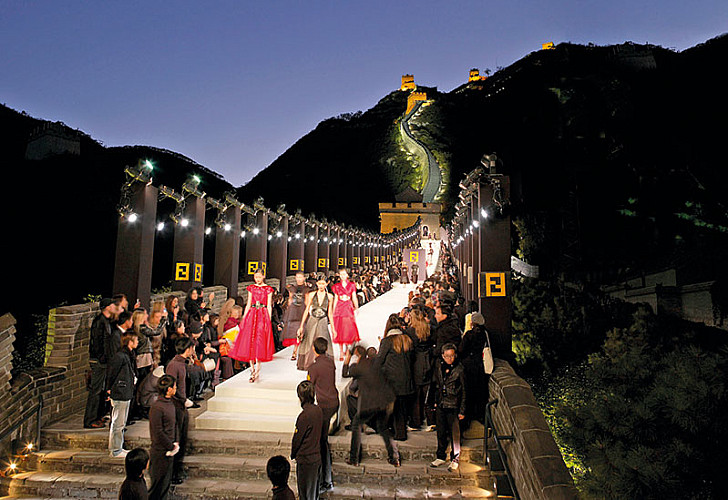
Back in 2013, it was music mogul P. Diddy (Sean Combs) who first brought the runway to Instagram, posting his collection for menswear brand Sean John on his account. This year, labels like Huemn, Péro and Misha Nonoo have opened their doors to more than the usual 300 odd people, making the runway no longer mysterious and inaccessible.
‘Fashion needs to have all kinds of people. It cannot afford to be snooty,’ highlighted milliner Shilpa Gupta in an interview with a leading newspaper. Gupta, who usually casts “real people” as models, directed LFW’s first plus-sized show this year. At the same time, women of diverse silhouettes and age groups took to the runway to showcase Wendell Rodricks and Schulen Fernandes’ AW16. After walking for this show, 18-year-old Cher D’Cruz felt that size zero no longer runs the world. “I don’t have to be ashamed of my body anymore. All shapes and sizes look beautiful with the right clothes. I truly believe that fashion is for everybody,” she says.
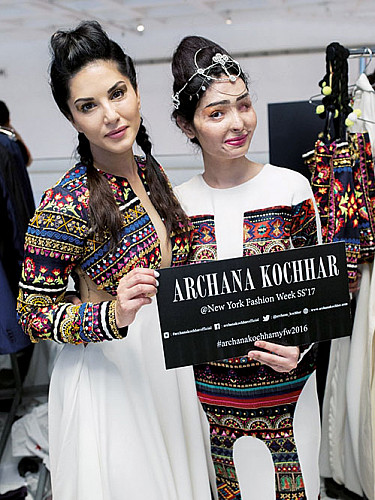
In The Beauty Myth, American author and journalist Naomi Wolf argues that society pressurises women to adhere to unrealistic standards of physical beauty. ‘Whatever is deeply, essentially female — the life in a woman’s expression, the feel of her flesh, the shape of her breasts, the transformations after childbirth of her skin — is being reclassified as ugly, and ugliness as a disease.’ As brands and designers begin to challenge these perceptions, the industry is steadily revisiting its obsession with ideal beauty and body type. Globally, the industry has taken a liking to bodies that have broken the mould — Hari Nef, the transgender model who walked for Gucci’s menswear show in Milan; Tess Holliday, the first size-22 woman to be signed up with a major modeling agency; and Madeline Stuart, the 18-year-old with Down’s syndrome. Questioning the norms, Mumbai-based designer Archana Kochhar roped in 19-year-old Reshma Qureshi, an acid attack survivor, as her showstopper for New York Fashion Week SS17. “I wanted to bring about acceptance and support for victims who have undergone this trauma around the globe. Beauty should not be affirmed by a certain height, colour or size. It is beyond that”. In London, acid attack victims Adele Bellis and Laxmi Aggarwal walked alongside professional models to raise awareness about violence against women.
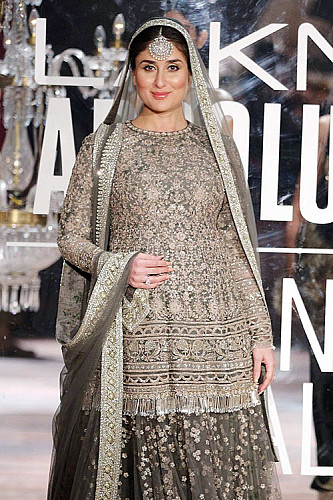
While we cannot discount the trillion-dollar fashion industry’s power to build businesses, the runway has given us unique, memorable moments that last beyond seasons. A single mother at 25, actor Sushmita Sen walked with her daughter Renee for Neeta Lulla in 2008, designers Payal Khandwala and Karishma Shahani-Khan continue to close shows with their children, and recently the internet celebrated Carol Gracias walking for designer Gaurang Shah with her full-blown baby bump. A pregnant Kareena Kapoor Khan, who modelled for Sabyasachi this season, told a leading newspaper, ‘It was an emotional moment for me. This is the first time we walked the ramp together.’
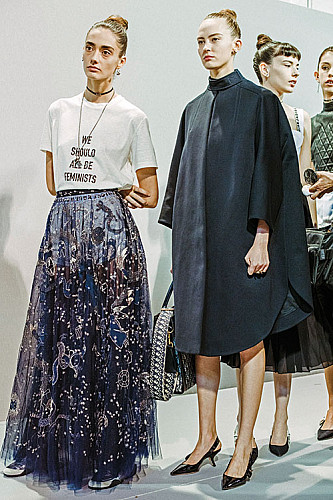
While human connections form the core of runway reforms, the revolution sometimes is much quieter, with the focus on processes, rather than performances. Designer Stella McCartney committed to never using fur or leather in her collection, subtly championing the cause of animal rights. Unapologetic about taking on street style, Gucci’s Alessandro Michele found inspiration in graffiti artist Trouble Andrew’s designs and incorporated them into Gucci’s AW16 collection. Burberry’s fierce see-now-buy-now model aims at giving more power to the end consumer, while feminist quotes printed on Maria Grazia Chiuri’s collection for Dior’s SS17 are a reflection of the brand opening up its atelier to their first female creative director. In a bid to revive the dying arts of his homeland, New York-based designer Prabal Gurung included handmade, recycled jewellery by Nepalese artisans as part of his SS17 showcase.
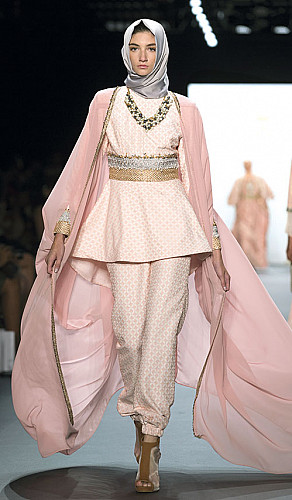
These individual spurts of change may appear to be modest victories for consumerism, women’s rights, the LGBTQ community, plus-sized models, and more. But its true significance is evident in brands such as Haute Hijab’s public statement to Indonesian designer Anniesa Hasibuan’s first hijab runway show in New York. It read: “I believe fashion is one of the outlets through which we can start that cultural shift in today’s society (to normalise the garment in America) so as to break down stereotypes and demystify misconceptions. Last night’s show was a huge leap forward in that direction — you made history”.
Related posts from Verve:
Verve Trending
Sorry. No data so far.
us on Facebook to stay updated with the latest trends



